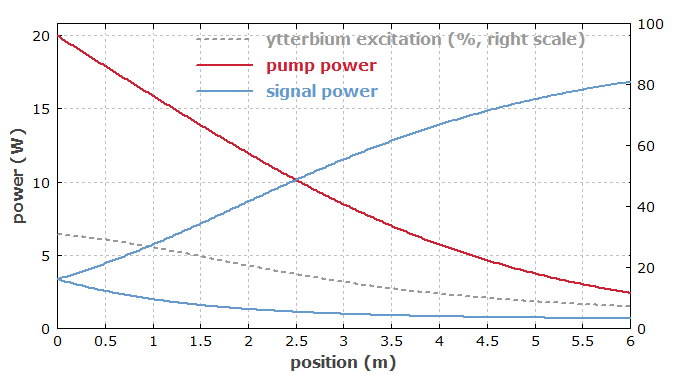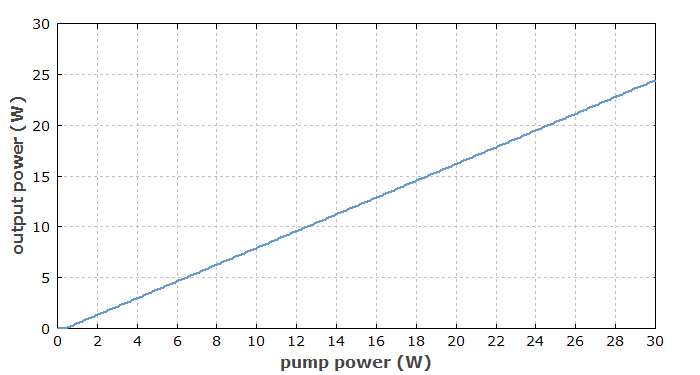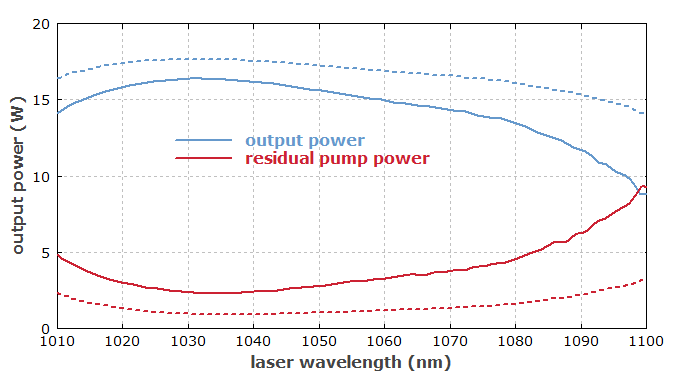
RP Fiber Power – Simulation and Design Software
for Fiber Optics, Amplifiers and Fiber Lasers
| Overview | Features | Speed | Model |
| Data | Interface | Demos | Versions |
Example Case: Cladding-pumped Ytterbium-doped Fiber Laser
Description of the Model
We numerically simulate a fiber laser with the following properties:
- The double-clad fiber exhibits single-mode propagation for the laser output, while the pump radiation propagates in the multimode pump cladding.
- The ytterbium doping is uniform within the step-index core. (Other profiles could easily be implemented.)
- There is a fiber Bragg grating with high reflectivity at the pump end, and the Fresnel reflection from the other end serves for the other resonator mirror.
There are actually two different demonstration models for cladding-pumped devices. The results shown here are from the simpler one, where a fixed top-hat intensity profile is assumed for the pump wave. For radially symmetric pump claddings with not more than several hundred modes, it is also possible to use a more sophisticated model, where all cladding modes are calculated, and the mode-dependent absorption is taken into account.
Results
Figure 1 shows the power distributions in the fiber, and also the fractional ytterbium excitation level. Upon reflection at the output end, the internal laser power is strongly reduced.

Figure 2 shows the output power as a function of the pump power.

Figure 3 shows the output power as a function of the lasing wavelength. Here, it is assumed that the laser wavelength is determined by the fiber Bragg grating at the pump end. The dashed curves apply to a case with increased fiber length (8 m instead of 6 m).

